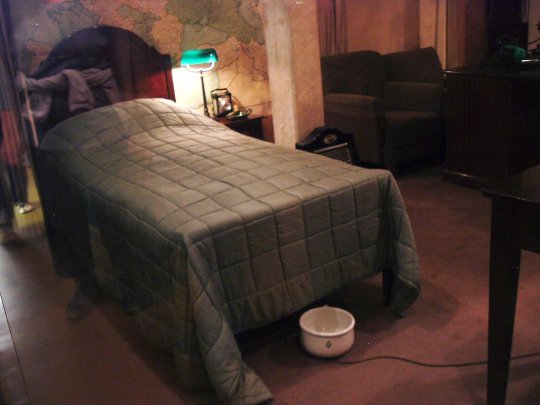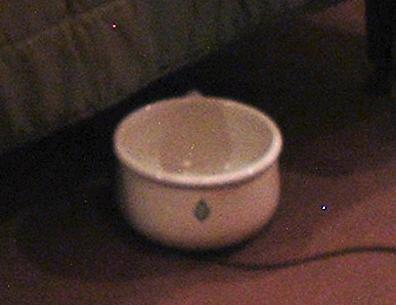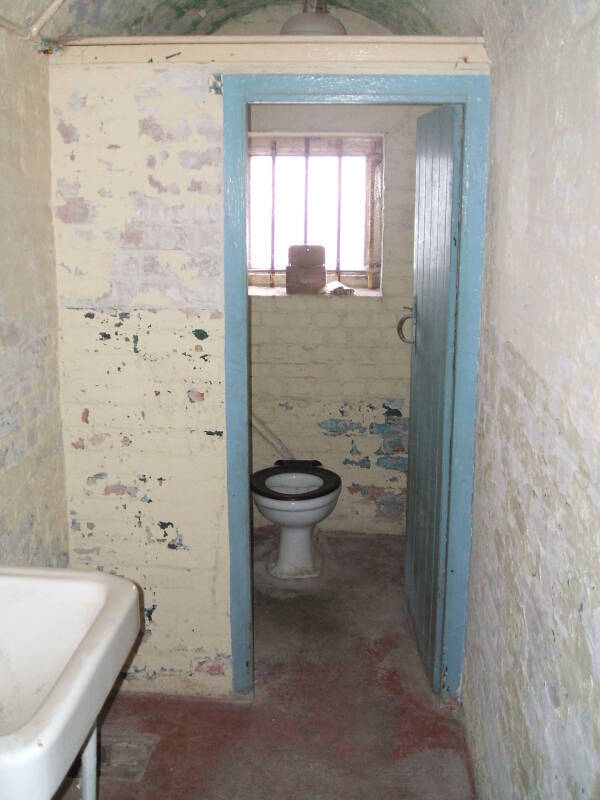
Winston Churchill's Chamber Pot
Cabinet War Rooms in London
Winston Churchill was the leader of the United Kingdom through almost all of World War II, serving as First Lord of the Admiralty from 3 September 1939, just two days after Germany's invasion of Poland, then Prime Minister from 10 May 1940 through 26 July 1945. He took on major roles in British politics from from February 1910 through April 1955. During the Second World War he led Britain's war effort from the Cabinet War Rooms hidden beneath central London. Living conditions were relatively spartan, with just a chamber pot in place of a toilet. Today you can visit the rooms where the British leadership monitored and controlled military action during World War II, including Churchill's apartment and chamber pot!
The underground complex that came to be known as the Cabinet War Rooms is within the Whitehall area of Westminster, beneath what then was the New Public Offices and now is the Treasury Building. The British leadership had seen the war coming, and started building the complex in 1938. It became operational on 27 August 1939, just four days before Germany invaded Poland.
Neville Chamberlain's war cabinet met just once in the complex, in October of 1939. Churchill first visited it in May 1940, the month he was appointed as Prime Minister, and declared "This is the room from which I will direct the war." 115 Cabinet meetings were then held within the complex from then through the end of the German V-weapon attacks in late March of 1945.
The facility was further armored with "The Slab", a five-foot-thick reinforced concrete overlayer, and enlarged to three times its original size.


When the Nazi air attacks forced Churchill and the rest of the Cabinet to stay within the bomb shelter of the Cabinet War Room complex, the facilities were very limited. Churchill preferred to spend the night at #10 Downing Street or in a flat in the building directly above the war rooms, but on several occasions he was forced to spend the night underground.
Here you see the apartment used by Churchill when he was forced to spend the night in the bunker.
And yes, that's his chamber pot on the floor at the foot of the bed.
The complex was close to Parliament, the Admiralty, and other government and military offices. They were first used in August 1939, just before Germany invaded Poland on the first of September, and were used through August 1945 and the surrender of Japan. The complex was preserved, only opened to the public in 1984.
The British government saw that enemy aerial bombing of London could be devastating. Crucial government operations would have to be dispersed into the countryside or moved underground.
The Map Room was in constant use around the clock, staffed by officers of the Royal Navy, Royal Air Force, and British Army. They collected and analyzed information, producing a daily intelligence summary for the King, Prime Minister, and the military Chiefs of Staff.
Winston Churchill took on major roles in British politics from February 1910 through April 1955. He served as Home Secretary 1910-1911, First Lord of the Admiralty 1911-1915, Chancellor of the Duchy of Lancaster in 1915, Minister of Munition 1917-1919 Secretary of State for Air 1919-1921, Secretary of State for the Colonies 1921-1922, Chancellor of the Exchequer 1924-1929, and then was the Leader of the Opposition in Parliament until 1951 and his return to office as Prime Minister until 1955.
Dover Cliffs Tunnel Complex
This toilet is in the formerly secret UK government bunkers tunneled into the cliffs above Dover.

Some of the tunnels date from the Napoleanic Wars, but they were greatly expanded during World War II. The UK anti-aircraft operations were controlled from here — radar and other data was gathered and interceptors were dispatched from here.
Amazon
ASIN: 1850744335
Tunnels under Dover Castle were converted into air-raid shelters in 1939, and then subsequently converted into an underground military command center and hospital.
The tunnels were later expanded, becoming a shelter for the Regional Seats of Government in the event of a nuclear attack in the early Cold War years. The plan was abandoned, as the chalk would not provide adequate protection from radiation.
See my travel page with many pictures from the secret bunkers at Dover. Also see my INFOSEC and Military History Tourism page for more on the Cabinet War Rooms.